Elective Modules
|
In addition, elective modules from the other master programs of the faculty are also available.
Agro and Farm Forestry | |||||||
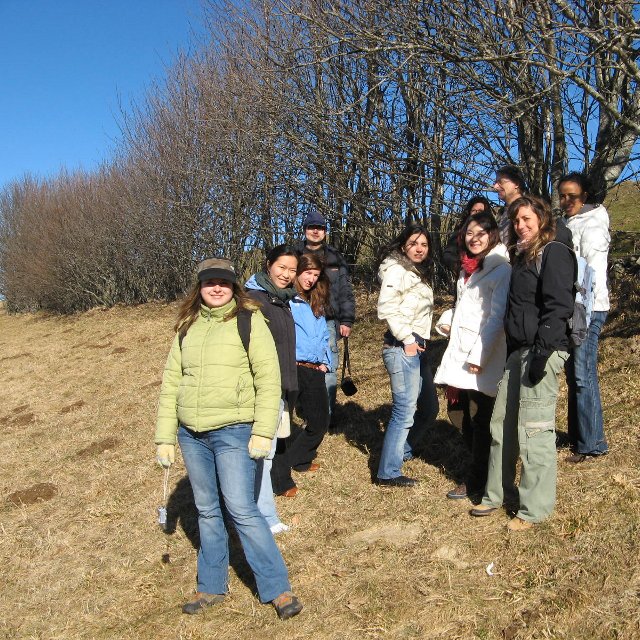 | Module coordinator
Additional lecturers
| ||||||
Excursion to an agroforestry site in Baden Württemberg, where forest management techniques provide farming with natural ecological functions such as soil or wind protection (FEM 2007). | |||||||
SyllabusIntroduction to agroforestry and farm forestry. Production characteristics of farmsteads, ecological interactions in subsystems, co-generation of crop, animal and silvicultural products, including non-wood forest products and carbon sequestration. Overview of land-use forms of agroforestry and farm forestry in temperate and tropical climates. Historical pathways of agroforestry and farm forestry. Field visits to farmsteads and trials. Case studies of selected examples of farm- and agroforestry, use of metaplan technique. Analysis of systems of farm- and agroforestry with modelling: system concept and model, interaction diagrams, modelling of dynamic systems (e.g. pasture models). Computer exercise: development of different types of models, including spreadsheet programming, systems optimisation, linear optimisation theory, simulation of a farmstead. Computer exercise: Modelling of CO2-sinks. Conclusions regarding the development of farm forestry and agroforestry projects | |||||||
Learning goals and qualificationsKnowledge of agroforestry and farm forestry systems, understanding of historical development of such systems, ecological-technical-economical interactions, carbon sequestration and development perspectives. Skills in analysis, modelling, simulation and optimisation of agroforestry and farm forestry systems with emphasis on plant production, economics, carbon sequestration and project development. | |||||||
Teaching and learning methodsLectures, excursions, computer exercises, case studies and student presentations | |||||||
Relevance of the moduleDevelopment cooperation in rural areas requires in-depth understanding of farm forestry and agroforestry systems, based on practical experiences and modelling. A part from this, the acquired skills and knowledge, e.g. regarding model formulation, linear optimisation, or CO2 sequestration provide a useful basis in many job situations. | |||||||
Preliminary Readings
| |||||||
Conservation Biology | |||||||||
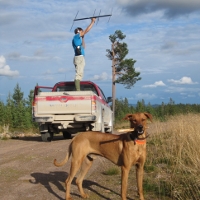 | Module coordinators
Additional lecturers
| ||||||||
| Conservation biologists commonly use telemetry to track wild animals and obtain data on their habitat use and movements. Understanding spatial requirements of species is important for conservation planning - e.g., to design a protected area large enough for a viable population of a threatened species. Here, an antenna is being use to determine the location of a lost collar with such data (Scandinavian Bear Project, Sweden. FEM internship 2010, courtesy S. Frank). | |||||||||
SyllabusI. Introduction
II. Ecological concepts
III. Conservation instruments and approaches
IV. Restoration ecology
V. Conservation Biology in practice - project work | |||||||||
Learning goals and qualificationsModule participants distinguish between conservation as a human goal, and political action, based on values (conservation ethic), and Conservation Biology as a scientific discipline which provides the scientific basis for conservation planning and action. Students understand aims, concepts and approaches of Conservation Biology and are able to critically assess and present data and original publications in the field. | |||||||||
Teaching and learning methodsLectures, excursions, student presentations, group work, project work, report writing. | |||||||||
Ecological Modelling | |||||
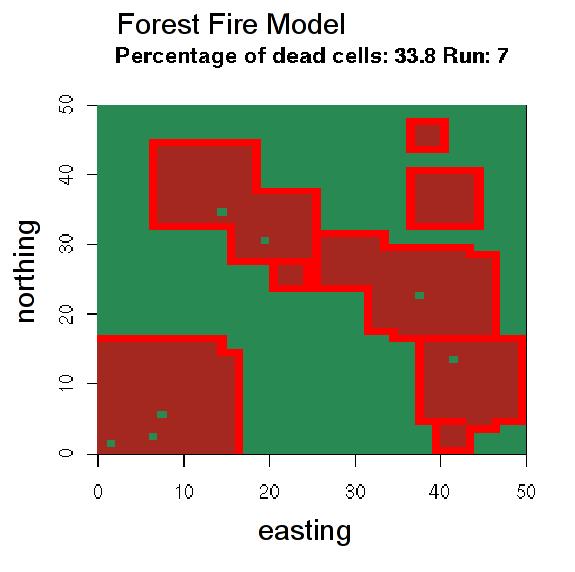 | Module coordinator
Additional lecturers
| ||||
| In spite of the complexity of biogeochemical processes, computer modelling is an excellent tool to gain better understanding of the functioning of ecosystems. The image shows a simple model used to simulate the expansion of forest fires. | |||||
SyllabusIntroduction to modelling and theoretical ecology. Modelling tools. System analysis and algorithmic thinking, basic principles of cybernetics. Introduction to differential equations. Introduction to computer programming with modelling examples. Brief introduction to related topics: cellular automats, point processes, Markov processes, fuzzy logic, fractal geometry, deterministic chaos. Implementation of simple ecological models (humus dynamics, carbonate weathering, temperature regime in soils, transport of water and matter in soils, population models) | |||||
Learning goals and qualificationsStudents will aquire:
| |||||
Teaching and learning methodsLecture (10%), Computer training + Lecture (40%), Computer Exercises 40% | |||||
Forest and Resource Inventory | |||||
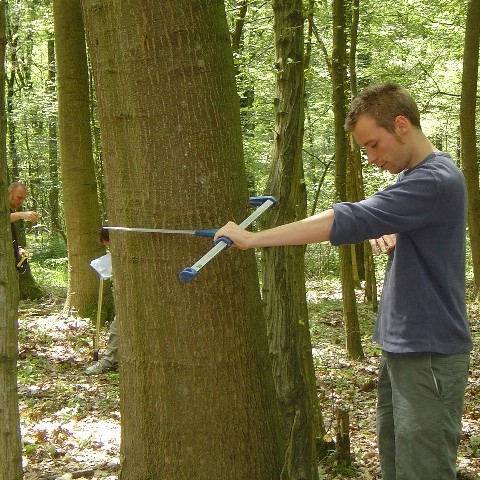 | Module coordinator
Additional lecturers
| ||||
Measuring DBH - Diameter at Breast Height - during field training. | |||||
Syllabus
| |||||
Learning goals and qualificationsStudents will gain the:
| |||||
Teaching and learning methodsLecture (30%), Exercises (30%), field work (20%), literature study 20% | |||||
Forest Growth and Silviculture | |||||||||
 | Module coordinators
Main lecturers
| ||||||||
| The area around Freiburg is very diverse in types of forest stands: conifer and broad leaves; even aged and uneven aged; single species and mixed species; etc. The image shows FEM students in an even aged spruce stand (Black Forest, 2009). | |||||||||
SyllabusIn this module students will learn how to analyse and interpret the growth of individual trees and the dynamics of forest stands in order to develop decision tools and design silvicultural prescriptions for their management. Based on an introduction to tree growth and its environmental control and an introduction to forest dynamics, regeneration methods and stand density management will be explored in the context of traditional silvicultural systems as well as in the context of ecosystem management and close to nature silviculture. Students will be introduced into various methods of sampling trees and stands in the field and analysis of trees and their parts. The participants will learn how to assess and interpret data and parameters of trees and stands for controlling tree and stand growth and will be able to apply methods of forest site productivity assessment. Students will be introduced to models of tree and stand growth and their critical application. Based on the understanding of the environmental and spatial determinants of tree growth and wood quality development, students will learn approaches to control tree and stand growth and apply their analytical and planning skills to a number of case studies incl. mixed-species and uneven-aged forests and stands undergoing conversion. Students will also learn the ecological implications of controlling tree and stand growth as well as silvicultural approaches to manage and restore forest structure for forest conservation goals. | |||||||||
Learning goals and qualificationsStudents:
| |||||||||
Teaching and learning methodsLectures will provide an overview over basic silvicultural and growth and yield concepts and highlight the scientific basis for silvicultural practices. They also aim at putting the readings into perspective and link silvicultural, ecological, and quantitative analysis concepts. The instructors assumes students have read the assigned material and the lecture will not just duplicate material covered in the readings. | |||||||||
Forests and Climate Change | |||||||||||
 | Module coordinator
Additional lecturers
| ||||||||||
SyllabusThe module will introduce the scientific basis of climate change and the physiological effects of climate change in plants. These include atmospheric processes significant to climate change, atmospheric features of climate change, effects of climate change on processes in trees and on biogeochemical cycles. The policy related to climate change will also be reviewed: background, state of affairs and problems with current national and international policies, etc. The students will learn also about the interactions between the soil and the atmosphere (relevance of soils in the carbon cycle, key parameters of carbon dynamics in soils, effects of land use change, etc.) and about the impacts of climate change in forest growth (growth-climate relations, forest management and climate change, growth parameters as indicators for climate change). | |||||||||||
Learning goals and qualificationsThe students will
| |||||||||||
Teaching and learning methodsLectures, tutorials, lab work, excursions | |||||||||||
Preliminary Readings
| |||||||||||
Forests and Water | |||||
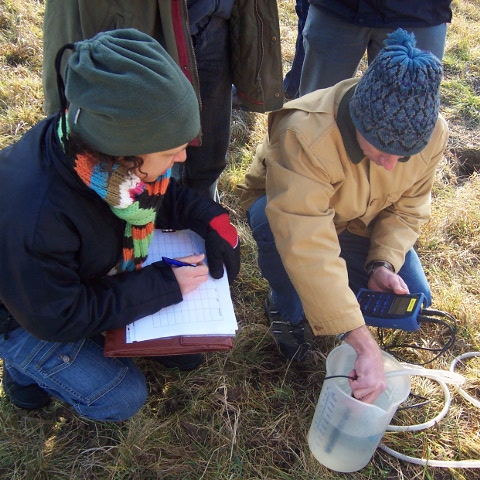 | Module coordinator
Additional lecturers
| ||||
| Measuring water parameters can yield valuable information about its origin and path. | |||||
SyllabusIn the module the fundamentals of water as the basis for life and growth of forests are imparted in two units.
| |||||
Learning goals and qualificationsThis module imparts knowledge on the importance of water being essential for forest ecosystems. At its end students will be able to
| |||||
Teaching and learning methodsLectures, excursions, student presentations, lab experiments, computer modelling exercises | |||||
Relevance/use of the moduleWater availability is of primary importance for all forests throughout the world. Hence a detailed knowledge of the water balance is important to understand forest ecology. and to manage forests. . | |||||
Preliminary Readings
| |||||
Forests As Sources And Sinks Of Atmospheric Pollutants | |||||||||||
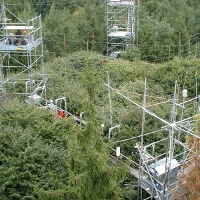 | Module coordinator
Additional lecturers
| ||||||||||
| Picture shows the "Kranzberger Forst", a beech/spruce mixed forest near Munich where forest/atmosphere interactions were studied. Parts of the forest were fumigated with elevated levels of ozone and its influence on C and N cycling including trace gas exchange was investigated. | |||||||||||
SyllabusScope of the module is to deepen the knowledge and scientific background on forest-atmosphere-interactions and to get practical insights in experimental and computational methods to analyse consequences of environmental changes including land use/ land management and climate changes on forest C-, N- and water cycles and trace gas exchange. The module combines overview lectures on the climate system, the carbon and nitrogen cycles, and biosphere-atmosphere exchange of trace gases of forests. In addition, specific lectures on impacts of land use and global change on the climate system, on the biological processes underlying trace gas exchange, and on criteria for ecological sustainable woody biomass production will be given. In practical exercises the students will be trained in gas exchange measurements of CO2, CH4, N2, and volatile organic compounds emissions from soil and plants for the quantification of ecosystem fluxes and processes. Computational exercises will give an introduction to environmental modelling. The excursion to a field observation station allows an insight in ongoing environmental forest research. | |||||||||||
Learning goals and qualificationsThe student will
Classification of cognitive skills following Anderson & Krathwohl (2001): 1 = Remember: retrieving relevant knowledge from long term memory; 2 = Understand: determining the meaning of instructional messages (interpreting, exemplifying, summarizing ...); 3 = Apply: carrying out or using a procedure in a given situation; 4 = Analyze: breaking material into its constituent parts and detecting how the parts relate to one another and to an overall structure or purpose; 5 = Evaluate: making judgment based on criteria and standards; 6 = Create: putting elements together to form a novel, coherent whole or make an original product. Teaching and learning methodsLectures, tutorials, lab work | |||||||||||
Core ReadingsA list of relevant texts will be made available at the start of the course; obligatory readings (and part of the voluntary readings) will be made available online in electronic form.
| |||||||||||
Landscape Ecology | |||||
Module coordinator
Main lecturer
| |||||
SyllabusThis module addresses the underlying theory and foundation for landscape ecology. We begin with a discussion about the inherent complexity of the natural world. We then ask the questions: How can we understand what is going on? What do we have to know to put natural phenomena into perspective? What bodies of knowledge can we use to understand the essential nature of large scale landscape change? In this course, students will work independently and as teams to understand the concepts and precepts of the class, and complete the assignments. Emphasis is on developing an empirical skeptical approach to learning. Elements of the course:
| |||||
Learning goals and qualificationsIn this module students will:
| |||||
Teaching and learning methodsReadings, problem sets, discussions, class presentations, lectures | |||||
Preliminary ReadingsJournal articles and book chapters as assigned | |||||
Non-timber Forest Products and Bioresources | |||||
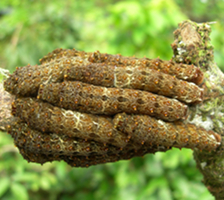 | Module coordinator
Additional lecturers
| ||||
Syllabus"Bioresources" are the products and benefits from ecosystems and their plant and animal populations to be used sustainably by people, including "non-timber forest products" in the well established meaning. Bioresources can be classified as usable, useful or hazardous, which can directly (e.g. meat; fruits; pathogens) or indirectly (e.g. pollinators; pests) affect human needs and interests. The Animals, plants and fungi do have numerous impacts on man; basic understanding of ecological principles in the light of management goals treated to help harnessing bioresources. Therefore, markets of bioresources as well as to historic and ethical aspects will be considered. | |||||
Learning goals and qualificationsStudents will learn to characterize different types of NTFPs and bioresources, as well as to assess management options for NTFPs. Drawing attention to new and innovative ways of generating income by using NTFPs and bioresources is the main goal of the course. Through case studies, students will learn to identify new products from ecosystems and will appreciate the difficulty in marketing some NTFPs and bioresources. | |||||
Teaching and learning methodsLectures, self-study, seminars, groupwork | |||||
Preliminary Readings
| |||||
Plantation Forestry | |||||||||||||
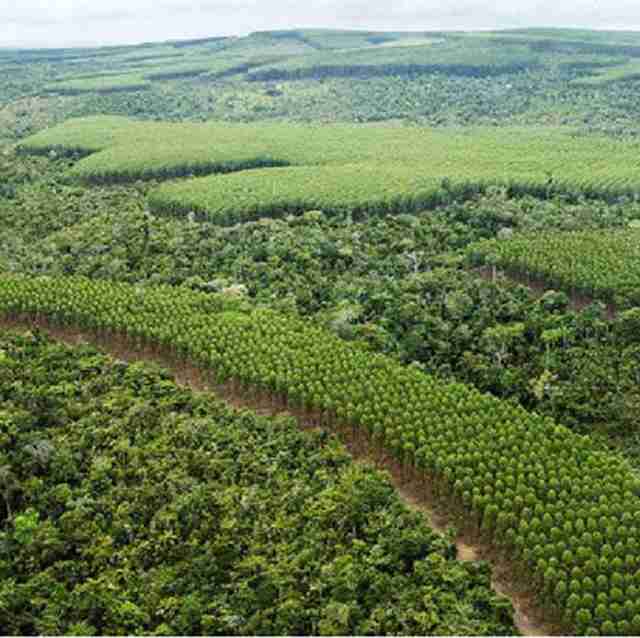 | Module coordinator
Additional lecturers
| ||||||||||||
SyllabusStudents learn basic objectives, strategies, concepts and management of plantation forestry. In a case study based on the example of a southamerican integrated forest/pulp company, the students learn about options to optimize wood production considering
| |||||||||||||
Learning goals and qualificationsThe overall learning goal is that the students learn to make a critical science and knowledge based evaluation of an enterprise based on plantation forestry and pulp production in order to optimise the management of natural resources, wood harvesting, transportation logistics and production processes. The students include into their assessment and decision making legal, social and natural restrictions in their decision taking. | |||||||||||||
Teaching and learning methodsCase study, comprising; lecture, didactic discussion, groupwork, oral presentation, report writing; | |||||||||||||
Preliminary Readings
| |||||||||||||

